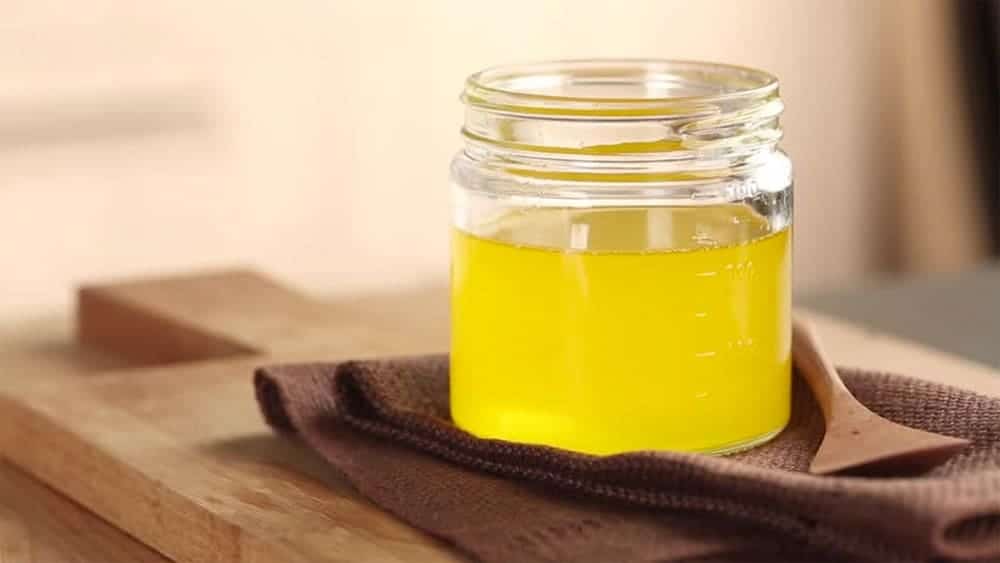For this blog post, I would like to explain the difference between clarified butter and regular butter, point out a few health benefits of clarified butter, and share how Leyla makes it!
What is Clarified Butter?
To better understand what makes clarified butter different from regular butter, let’s talk about regular butter first. Butter, unlike cooking oil, is not completely made of fat. The breakdown of butter is about 81% fat, 17% water, and 2% milk solids. Clarified butter is made when this water and the milk solids are removed from the regular butter during a melting process.
What Are Some Health Benefits of Clarified Butter?
Research has shown that consumption of clarified butter can decrease the risk of heart disease due to the presence of CLA, a fatty acid that provides protection from diabetes, carcinogens, and more.
Consuming clarified butter can also aid in digestive problems, because it contains butyric acid, which reduces inflammation and helps to restore the lining of the gut, among other benefits.
Clarified butter comes from a natural source (butter), and because of the way it is made (which is described below), there is minimal lactose and milk protein in it. It is tolerated by most people with lactose intolerance, milk allergies, and dairy sensitivities.
Additionally, when made from grass-fed butter, clarified butter can provide our bodies with the much-needed vitamins A, D, E, and K.
What are Some Additional Benefits of Clarified Butter?
When compared to cooking oils, regular butter has a low smoke point. The smoke point of clarified butter is at least 100 degrees Fahrenheit higher than that of regular butter, so it can be used for sautéing, frying, and other substantial stove top cooking methods.
It also has a much longer shelf life than regular butter, and can be stored unrefrigerated for up to three months.
How Do We Make Our Own Clarified Butter?
Leyla believes that the best way to make clarified butter is by slowly melting unsalted butter in a small pan, over low-to-medium heat. After the butter melts, the milk solids form a white layer on the top of the butter, which she removes with a spoon.
Next, she takes the butterfat off of the heat for a few minutes, and strains it through a strainer lined with a coffee filter and into a bowl. At the bottom of the pan, there are always additional milk solids. She leaves those in the pan, and doesn’t strain them. She pours the clarified butter from the bowl into a sealed container, and stores it in the fridge.
We enjoy making clarified butter, using it in our recipes, and the many health benefits it offers. We think you’ll appreciate its benefits as much as we do once you give it a try!
photo: Cooking w/Jack


